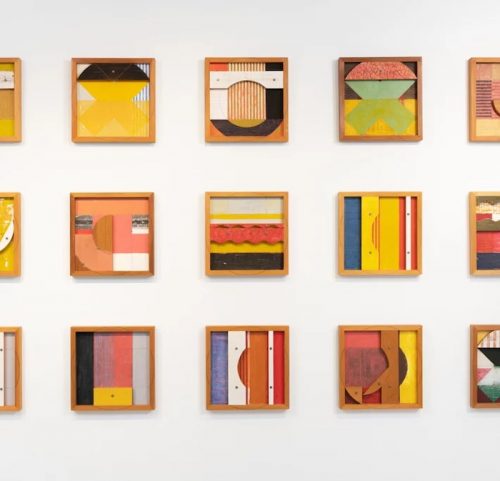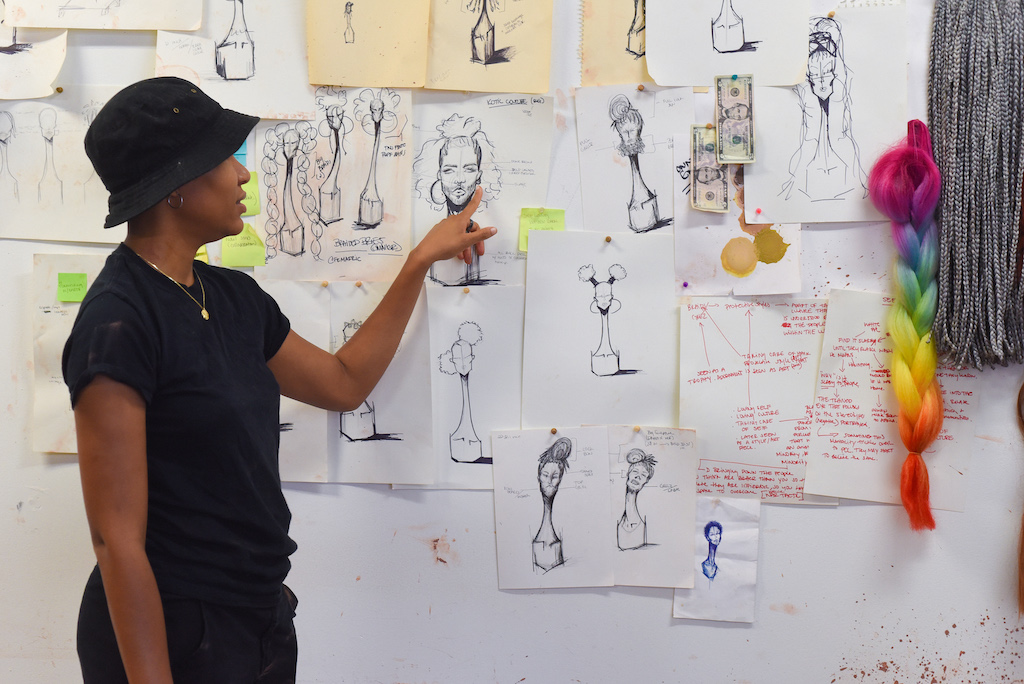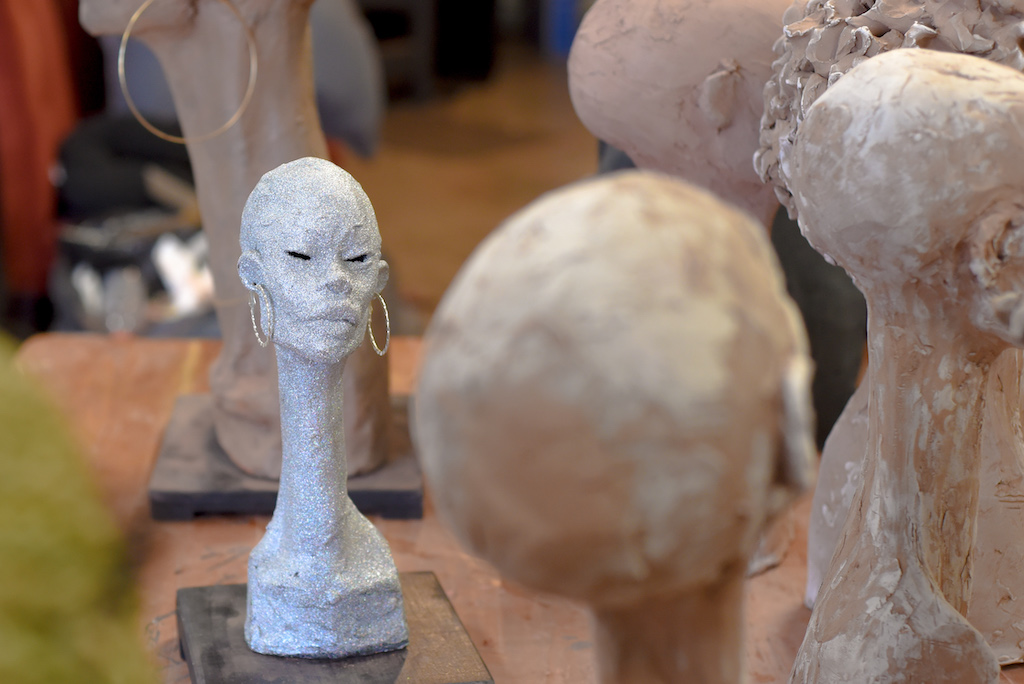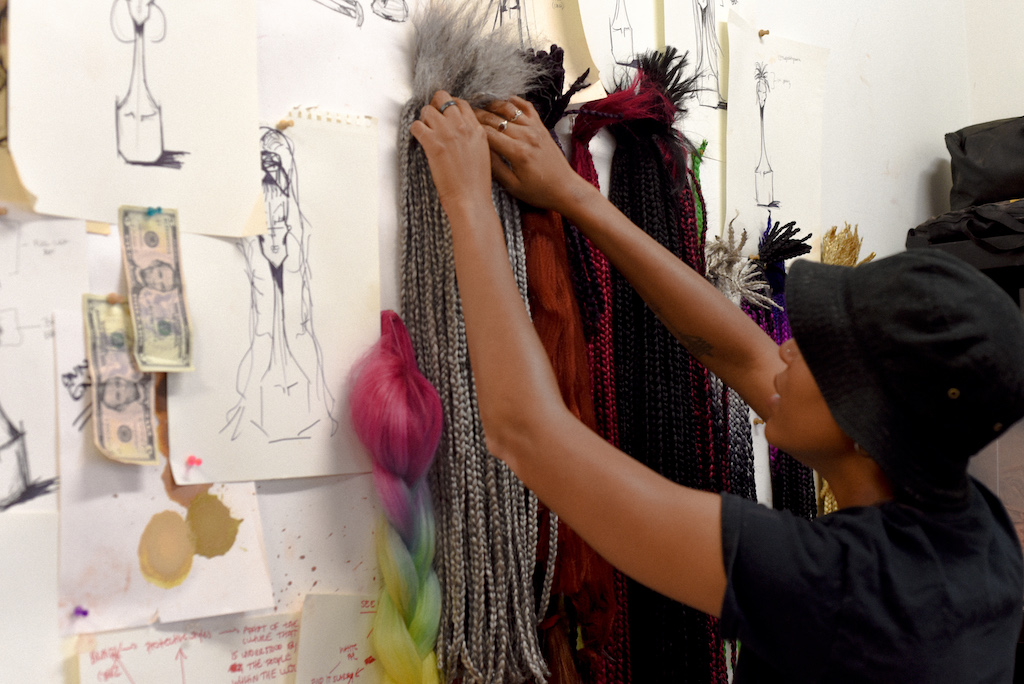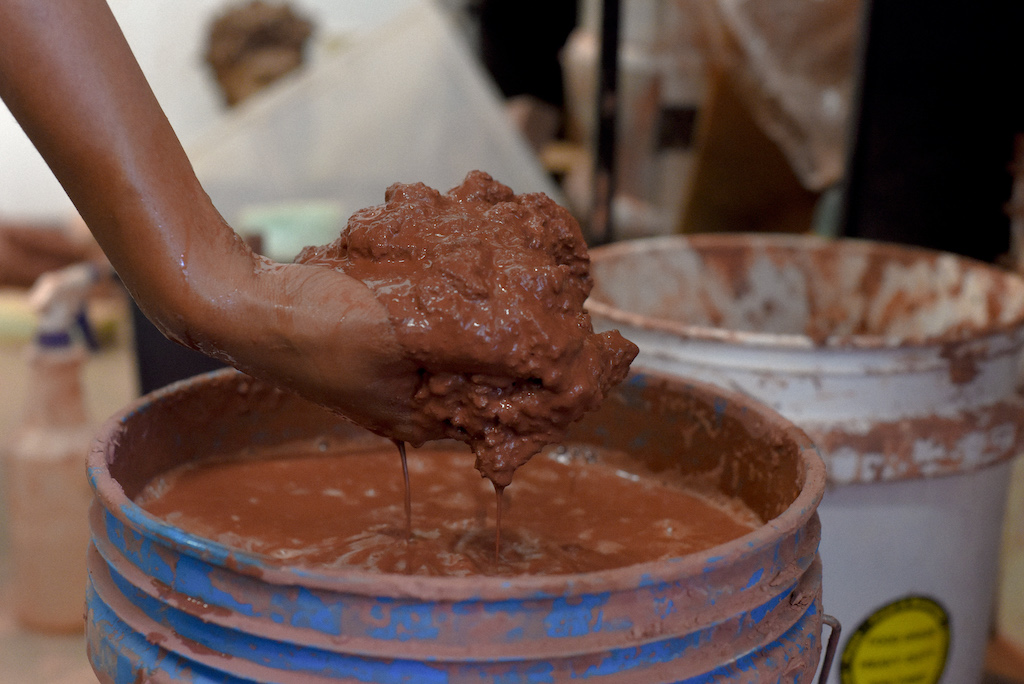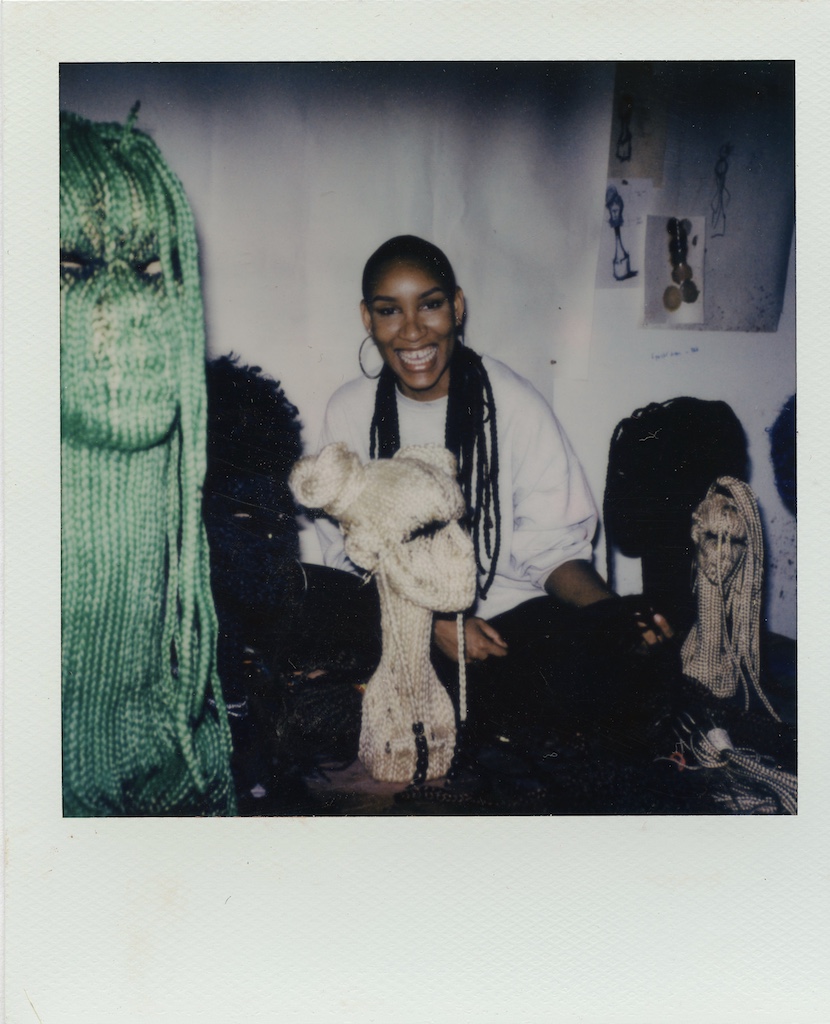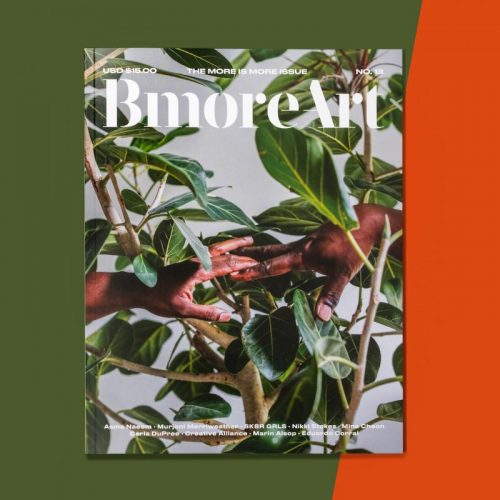On a recent visit to Murjoni Merriweather’s home and studio at Creative Alliance, the artist enthusiastically showed me a shelving unit full of ceramic busts in various hues and finishes, embellished with gold teeth, kanekalon braids, giant hoop earrings, and faux eyelashes. These details are a specific infusion of Black hair culture into the Baltimore native’s sculptural practice which is now being nationally recognized, especially after exhibiting at Jeffrey Deitch in Los Angeles in March 2021.
Merriweather was warm and hospitable, and our visit was infused with a frenetic energy because she was readying herself (and her cat) to leave for Miami the following day for the prestigious Fountainhead Residency. The one-month residency is free and allows artists to fully immerse themselves in their work. Inclusion is by invitation only, and alumni include Shikeith, Deborah Roberts, Abigail DeVille, and Sable Elyse Smith, an impressive roster that bolsters Merriweather’s status as an artist to watch in the contemporary art world.
Merriweather has been sculpting lifesize clay busts for a decade, personalizing the historic tradition that goes back to the Ancient Greeks and Romans, as well as the Egyptians, and the Kingdoms of Benin and Ife. Historically, portrait busts were made of aristocrats and political leaders in marble or bronze, but Merriweather remixes the convention using terracotta clay. With high cheekbones, long necks, prominent lips, and shaved heads, Merriweather’s busts boast exaggerated features that often resemble her own likeness, as well as her friends and family. The artist’s impetus for creation has always been the representation and inclusion of Blackness within the art historical canon, a desire formed after growing up visiting museums and galleries full of European sculpture, where the few Black individuals depicted were either enslaved or had Eurocentric features.
Similar to Kehinde Wiley, Tschabalala Shelf, and Amy Sherald (formerly a Creative Alliance resident artist herself), Merriweather’s work offers a loving correction to art history and a bold statement about Black beauty. Her goal is to challenge aesthetic standards codified over thousands of years and to allow Black audiences to feel included in gallery exhibits and museum collections, creating a more expansive art history of the future.

